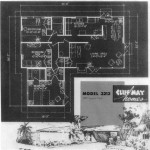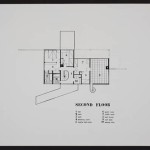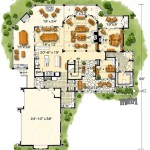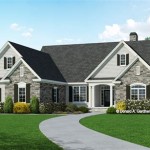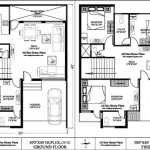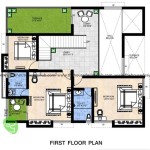Saltbox House Plans: A Timeless Architectural Choice
Saltbox house plans represent a distinctive and enduring architectural style that originated in New England during the 17th century. Characterized by its asymmetrical roof – a long, sloping rear roofline that descends from the ridge to nearly the ground – and rectangular shape, the saltbox house offers a blend of historical charm, practical design, and adaptability to modern living. This article examines the key features, historical context, advantages, and contemporary adaptations of saltbox house plans.
Historical Origins and Evolution
The genesis of the saltbox house is rooted in the early colonial period of American history. Colonists, facing scarcity of resources and the need for efficient shelter, devised a simple yet effective design. The initial structure was typically a two-story, gable-roofed house, often built with a central chimney. As families grew and needed more space, an addition was constructed onto the back of the house. This extension utilized a lean-to roof, creating the characteristic long, sloping rear roofline that defines the saltbox style.
The name "saltbox" is believed to have originated from the resemblance of the house's shape to the wooden boxes used to store salt in colonial kitchens. These boxes, with their distinctive angled lids, provided a readily recognizable comparison for the unique roofline. The saltbox design provided several advantages. The extended roof at the rear offered better protection from the harsh New England winters, shielding the back of the house from wind and snow. Internally, the addition created more living space, often used for kitchens, pantries, or additional bedrooms.
The architectural style evolved over time, with variations in size, materials, and detailing. Early saltbox houses were often constructed with timber frames, using locally sourced wood. Clapboard siding was a common exterior finish, providing both weather resistance and aesthetic appeal. Windows were typically small and multi-paned, reflecting the limitations of glass manufacturing at the time. Interiors were characterized by simple layouts, with large fireplaces serving as the primary source of heat and cooking.
Key Architectural Features of Saltbox House Plans
Several defining features contribute to the unique character of saltbox house plans:
Asymmetrical Roofline: This is the most recognizable characteristic. The long, sloping rear roofline extends from the ridge down to a point close to the ground, creating a distinctive profile. This design minimizes exposure to the elements and maximizes interior space on the lower level.
Rectangular Shape: Saltbox houses typically have a rectangular footprint, optimizing space and construction efficiency. The simplicity of the shape lends itself well to additions and modifications.
Central Chimney: A large chimney, usually located in the center of the house, is another common feature. This chimney serves multiple fireplaces, providing heat to various rooms throughout the house. In modern adaptations, the central chimney may be retained for aesthetic purposes, or replaced with more efficient heating systems and smaller flues.
Clapboard Siding: Clapboard siding, consisting of overlapping horizontal boards, is a traditional exterior finish. This type of siding provides excellent weather protection and contributes to the historical aesthetic.
Small, Multi-Paned Windows: Historically, saltbox houses featured small windows with multiple panes of glass. These windows were designed to conserve heat and provide adequate natural light. Modern saltbox house plans often incorporate larger windows while maintaining the traditional style.
Minimal Ornamentation: Saltbox houses emphasize functionality over elaborate ornamentation. Simple architectural details, such as plain door frames, unadorned windows, and minimal trim, are characteristic of the style.
Advantages of Choosing a Saltbox House Plan
Saltbox house plans offer several advantages that make them an appealing choice for homeowners:
Historical Charm: The distinctive architecture of the saltbox house evokes a sense of history and tradition. The style is reminiscent of early American settlements and resonates with those who appreciate classic design.
Efficient Space Utilization: The sloping roofline and rectangular shape maximize usable space. The lower level, under the extended roof, provides additional storage or living areas.
Weather Resistance: The long rear roofline effectively shields the back of the house from harsh weather conditions. This design is particularly well-suited for regions with cold winters and heavy snowfall.
Adaptability: Saltbox house plans can be adapted to suit a variety of lot sizes and orientations. The simple rectangular shape allows for flexibility in layout and design.
Energy Efficiency: The compact design and simple roofline can contribute to energy efficiency. The extended roof provides shade in the summer, while the central chimney helps to retain heat in the winter. Modern saltbox house plans often incorporate energy-efficient materials and technologies.
Contemporary Adaptations of Saltbox House Plans
While maintaining the core elements of the traditional style, contemporary saltbox house plans incorporate modern amenities and design features. These adaptations allow homeowners to enjoy the historical charm of the saltbox while benefiting from the comforts and conveniences of modern living.
Open Floor Plans: Modern saltbox house plans often feature open floor plans, creating a more spacious and light-filled interior. The traditional layout of separate rooms is replaced with open living areas that promote social interaction and flexibility.
Larger Windows: Modern glazing technology allows for larger windows without compromising energy efficiency. This provides more natural light and offers better views of the surrounding landscape.
Modern Kitchens and Bathrooms: Contemporary saltbox house plans incorporate modern kitchens and bathrooms with updated appliances, fixtures, and finishes. These spaces are designed for functionality and convenience, while still complementing the overall aesthetic of the house.
Energy-Efficient Technologies: Modern saltbox houses often incorporate energy-efficient technologies such as solar panels, geothermal heating and cooling systems, and high-performance insulation. These features reduce energy consumption and lower utility bills.
Sustainable Materials: Many contemporary saltbox house plans utilize sustainable building materials such as recycled wood, bamboo flooring, and low-VOC paints. This approach reduces the environmental impact of construction and promotes a healthier indoor environment.
Variations in Roof Pitch and Height: While the asymmetrical roofline remains a defining characteristic, modern saltbox house plans may incorporate variations in roof pitch and height. This allows for greater design flexibility and can create more usable space on the upper floors.
Integration with Modern Landscaping: Modern saltbox houses are often integrated with contemporary landscaping designs. This can include features such as outdoor patios, decks, and gardens, which extend the living space and enhance the property's aesthetic appeal.
Considerations When Choosing a Saltbox House Plan
When considering a saltbox house plan, several factors should be taken into account:
Lot Size and Orientation: The size and orientation of the lot will influence the design and layout of the house. A larger lot may allow for a more expansive saltbox design, while the orientation of the lot will affect the placement of windows and doors to maximize natural light and views.
Climate: The climate of the region should be considered when choosing a saltbox house plan. In colder climates, it is important to ensure adequate insulation and weather protection. In warmer climates, it may be necessary to incorporate features such as shading and ventilation to maintain comfortable indoor temperatures.
Local Building Codes and Regulations: It is essential to comply with all local building codes and regulations. This may include requirements for setbacks, height restrictions, and energy efficiency standards.
Budget: The cost of building a saltbox house will vary depending on the size, materials, and level of customization. It is important to establish a realistic budget and to work with a qualified builder to ensure that the project stays within budget.
Personal Preferences: Ultimately, the choice of a saltbox house plan should reflect the homeowner's personal preferences and lifestyle. Consider how the house will be used and what features are most important to you.
Saltbox house plans offer a unique blend of historical charm, practical design, and modern adaptability. By understanding the key features, advantages, and contemporary adaptations of this timeless architectural style, homeowners can make informed decisions and create a home that is both beautiful and functional.

House Plan 94007 Saltbox Style With 1900 Sq Ft 4 Bed 2 Bath

Dutch Saltbox Vermont Frames

Saltbox Early New England Homes

Small Saltbox House Plans

Salt Box House Plan 8404 Sb Home Designing Service Ltd

Saltbox Style Garrison House Plans

Saltbox Houses Minnie Muse

I Would Love Living Here Saltbox House Plans Colonial Houses

Everything You Need To Know About Saltbox Style Houses

Solar Saltbox Farmhouse Elaborated Diagram Houses Exterior House Remodel Home Addition Plans

